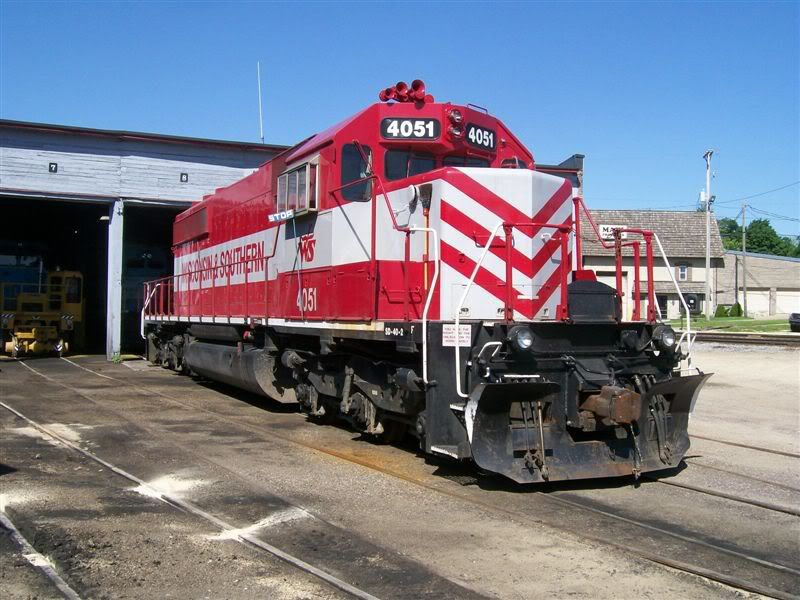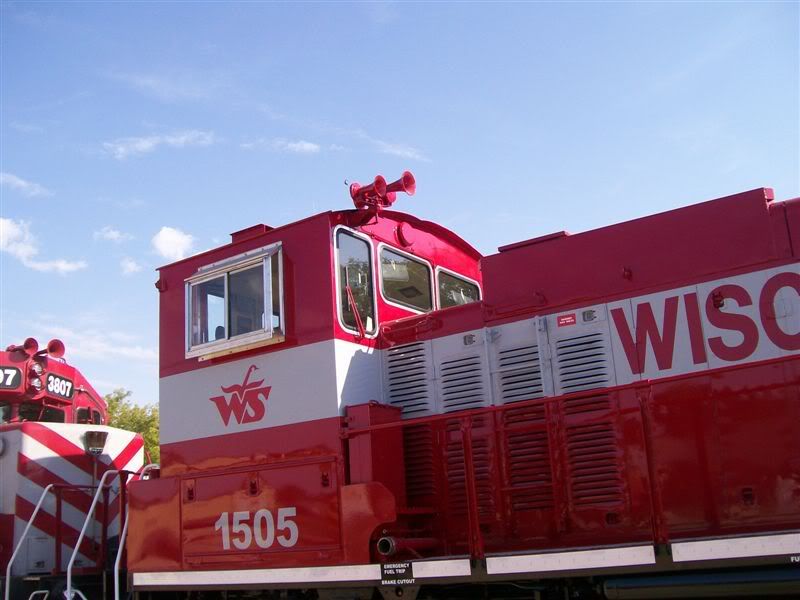I have noticed that on a few CSX GP40’s they have moved the horns from the roof of the cab to near the radiator fans at the rear of the long hood. Is this a common trend to get the horn noise away from the engineer and conductor?
I believe there is an FRA mandate about decibel level in the cab. This is a move to lower cab noise.
Thats the main reason, the other is the heat from the radiators also helps keep the horns from freezing up in winter weather on railroads that run in heavy snow and artic cold. Alaska RR has had thier horns back over one of the rad fans for years. But the main reason is the excessive noise level for the crew in the cab below the horn. The body area on say a GE Dash9-40c and similar units where the horn is mounted is right above the manifolds of the Diesel engine inside that compartment, and thus also very hot when running down the track, keeping the horn thawed out and the noise away from the crew. Cheers Mike
Come on! If you don’t turn out deaf, how do you prove you’re a real locomotive engineer, sharpshooter, rock musician, heavy forge operator, etc.?
Mark
What did you say, Mark?[swg]
I’ll add three more, working at a stock car racetrack, a dance hall, and an auction house.
Some of the early air horns weren’t quite as loud as today’s air horns. Some early diesels only had one or two horns, compared to today’s 3 and 5 horn combos.
This is only from info I’ve read over the years:
Ironically, a contributing factor to this was “technological progress” for these warning devices.
After their introduction, the popular, mellow sounding Nathan K5LA and K3LA horns were reportedly the highest decibal level horns on the market, even louder than the higher pitched Nathan P5 series and Leslie S3K series. Though sweet sounding to many of us that are railfans, complaints from thousands of people living near railroad lines where “K” equipped locomotives ran, poured in to railroads and eventually the FRA. Adding to the ruckus, those same people complained about every horn and thus the campaign for “Quiet Zones” grew like zits on a teens face.
You can look at the Brotherhood of Locomotive Engineer’s archives and find that a number of train crew members also complained, but with good reason. Sadly, increasing numbers of crew members suffered hearing losses at a greater rate than crew members from the past before the K series horns were introduced.
A friend of mine who was a locomotive engineer lost a portion of his hearing from the combined noise of Amtrak F40s in HEP mode and the K5LA horn. Even before the FRA stepped in, in the early 90s a few Class I and Class II railroads roads started to move horns back towards the center of the locomotives, regardless of horn brand or type (Leslie, Nathan, Prime). A good number of new locomotives are now delivered with horns near the center. CSX installed “choke fittings” on a number of K series equipped units to slightly knock down the decibals. Of course there are still many units inservice with horns over or just behind the cab.
The new Nathan “K3LLA” and “K5LLA” horns have a lower decibal level and are deliberately dischorded. (imho they ju
What’s that? A K5LA over my head might be a little loud?

Or a K3?

Speak up! [;)]
What was that old saying? “If it’s too loud, you’re too old”. Guess I’m too old!